
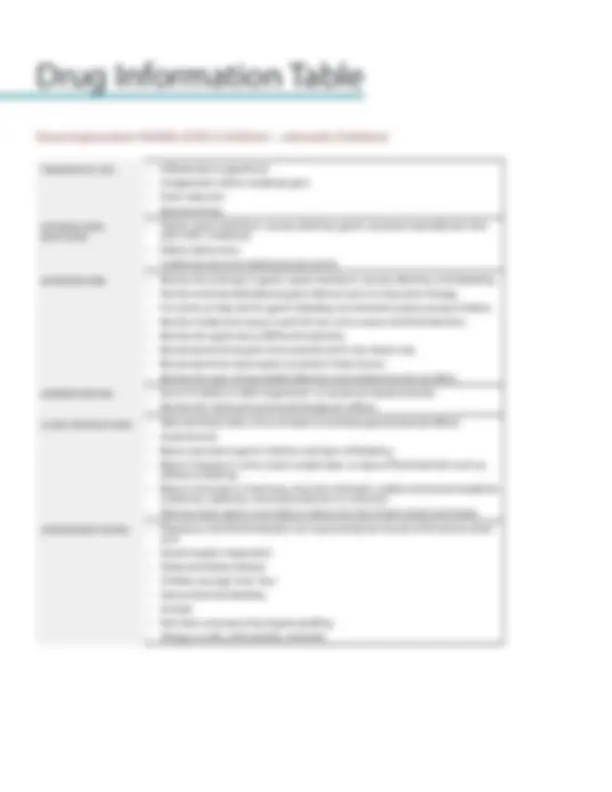
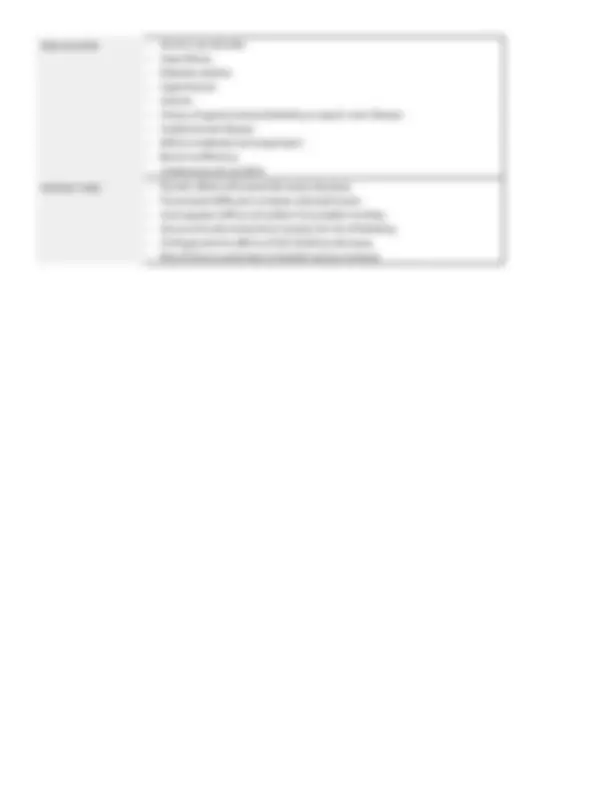
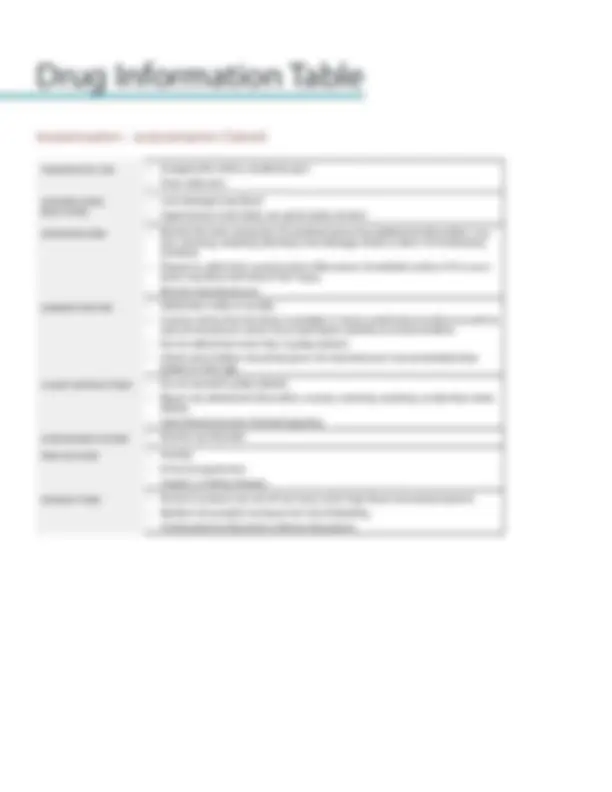
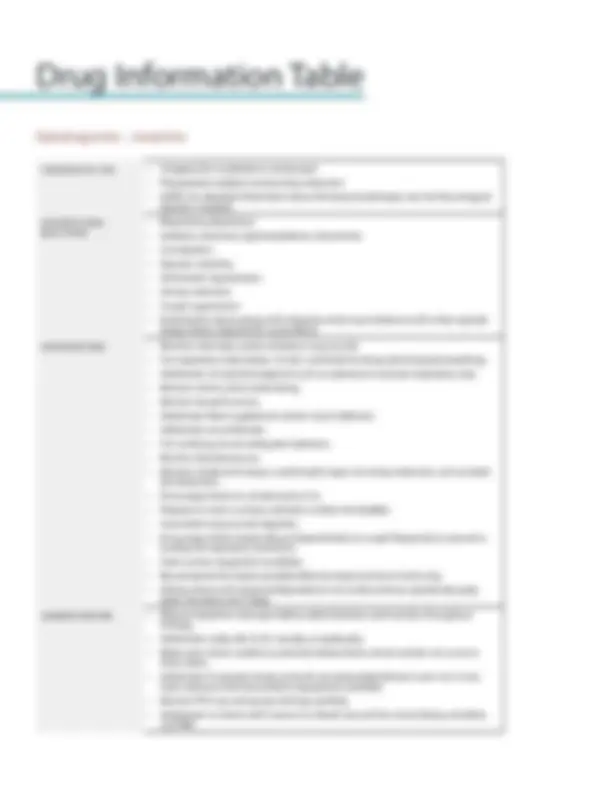
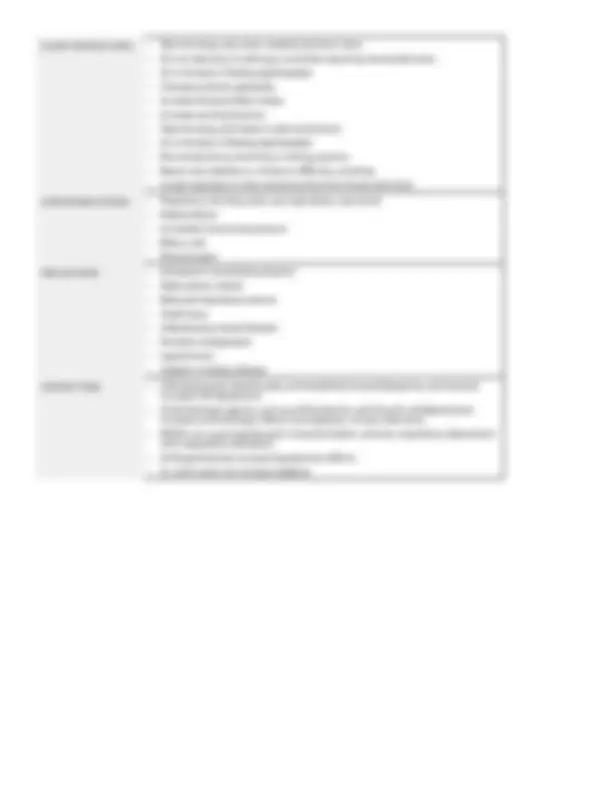
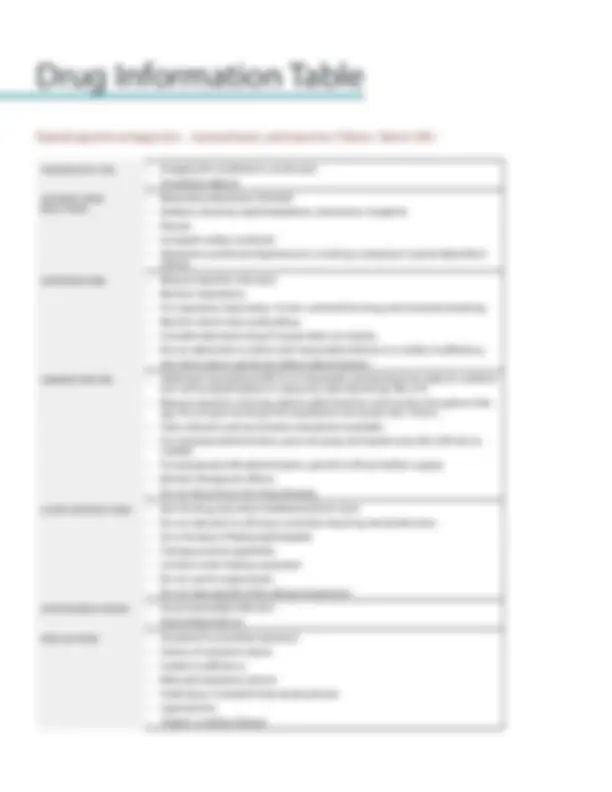
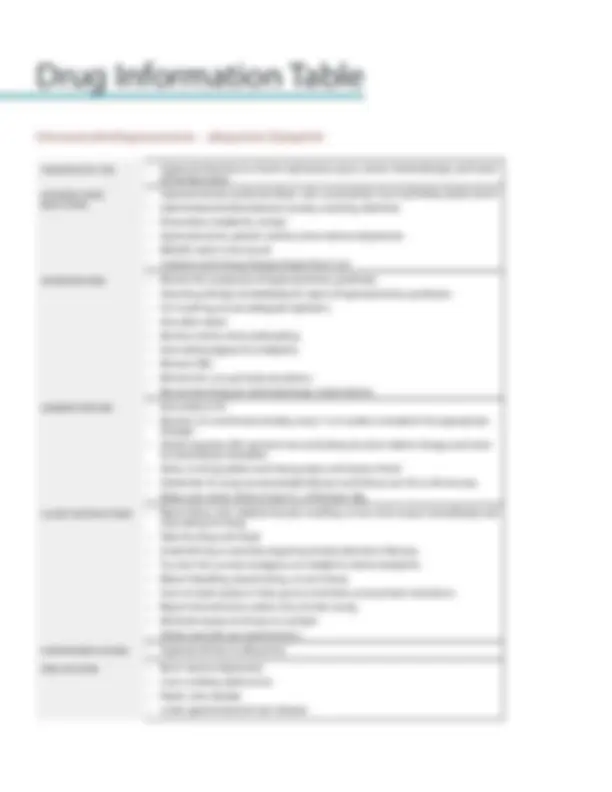

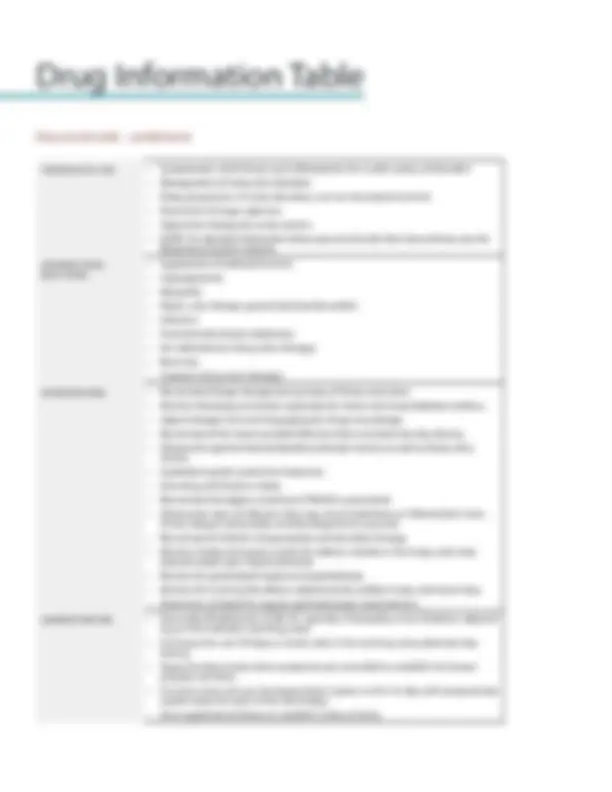


Study with the several resources on Docsity

Earn points by helping other students or get them with a premium plan


Prepare for your exams
Study with the several resources on Docsity

Earn points to download
Earn points by helping other students or get them with a premium plan
Community
Ask the community for help and clear up your study doubts
Discover the best universities in your country according to Docsity users
Free resources
Download our free guides on studying techniques, anxiety management strategies, and thesis advice from Docsity tutors
notes on various nursing topics
Typology: Study notes
1 / 16

This page cannot be seen from the preview
Don't miss anything!










THERAPEUTIC USE •^ Inflammation suppression
CLIENT INSTRUCTIONS •^ Take with food, milk, or 8 oz of water to minimize gastrointestinal effects.
CONTRAINDICATIONS •^ Teratogenic
PRECAUTIONS •^ Older adults
INTERACTIONS •^ Anticoagulants, glucocorticoids, and alcohol increase the risk of bleeding.
PRECAUTIONS •^ Alcohol use disorder
INTERACTIONS •^ Diuretic effects of furosemide (Lasix) decrease.
THERAPEUTIC USE •^ Analgesia for mild to moderate pain
INTERACTIONS •^ Monoamine oxidase inhibitors (MAOIs) pose a risk for hypertensive crisis.
THERAPEUTIC USE •^ Analgesia for moderate to severe pain
THERAPEUTIC USE •^ Analgesia for moderate to severe pain
INTERACTIONS •^ CNS depressants (barbiturates, phenobarbital, benzodiazepines, and alcohol) increase CNS depression and increase the risk of respiratory depression.
THERAPEUTIC USE •^ Hyperuricemia due to chronic tophaceous gout, cancer chemotherapy, and some blood dyscrasias ADVERSE DRUG REACTIONS
INTERACTIONS •^ Warfarin (Coumadin) requires lower dosages.
CLIENT INSTRUCTIONS •^ Report increased stress, as higher dosages are required at such times.
CONTRAINDICATIONS •^ Recent live virus immunization
PRECAUTIONS •^ Heart failure
INTERACTIONS •^ Potassium-depleting diuretics, such as furosemide (Lasix), increase risk of hypoka- lemia.